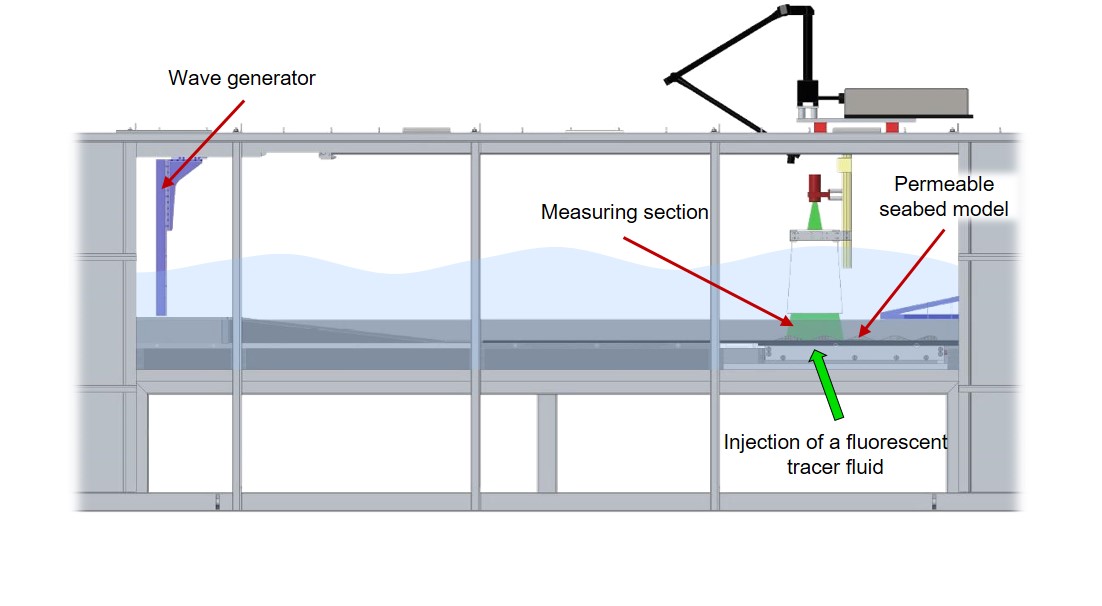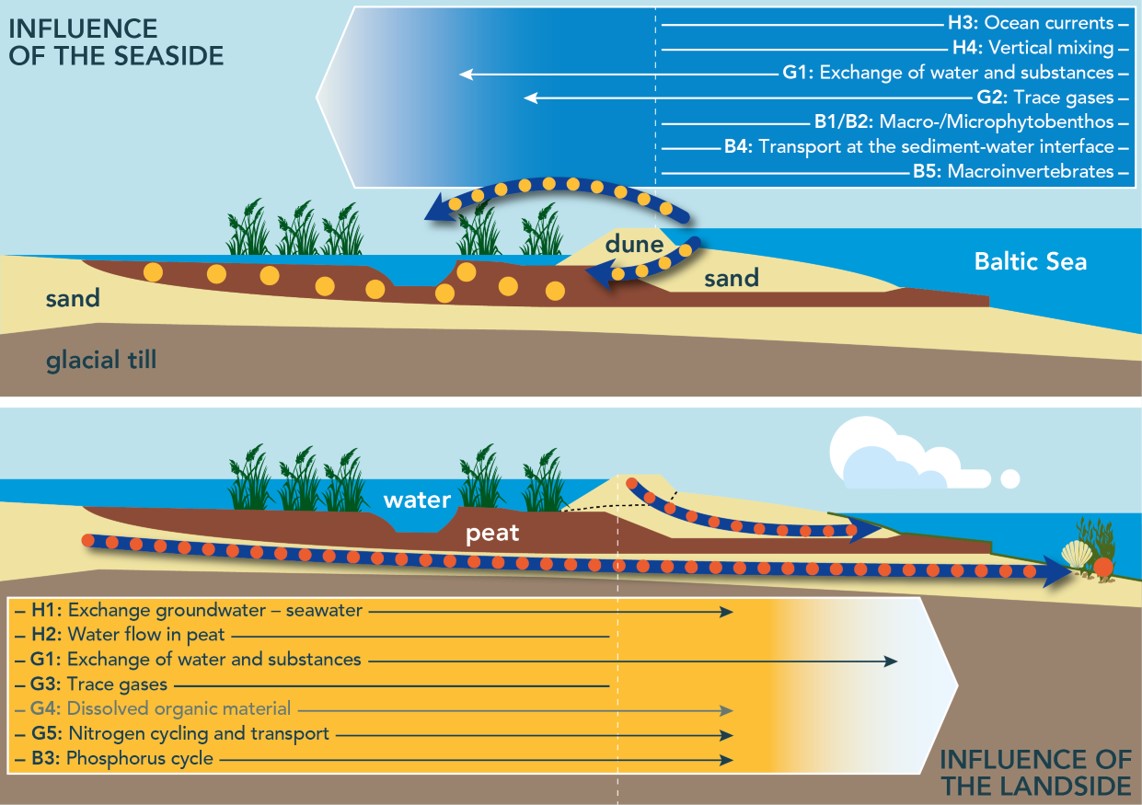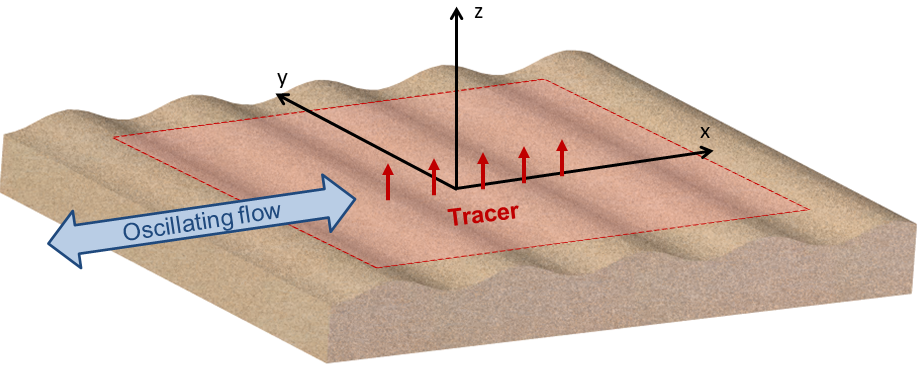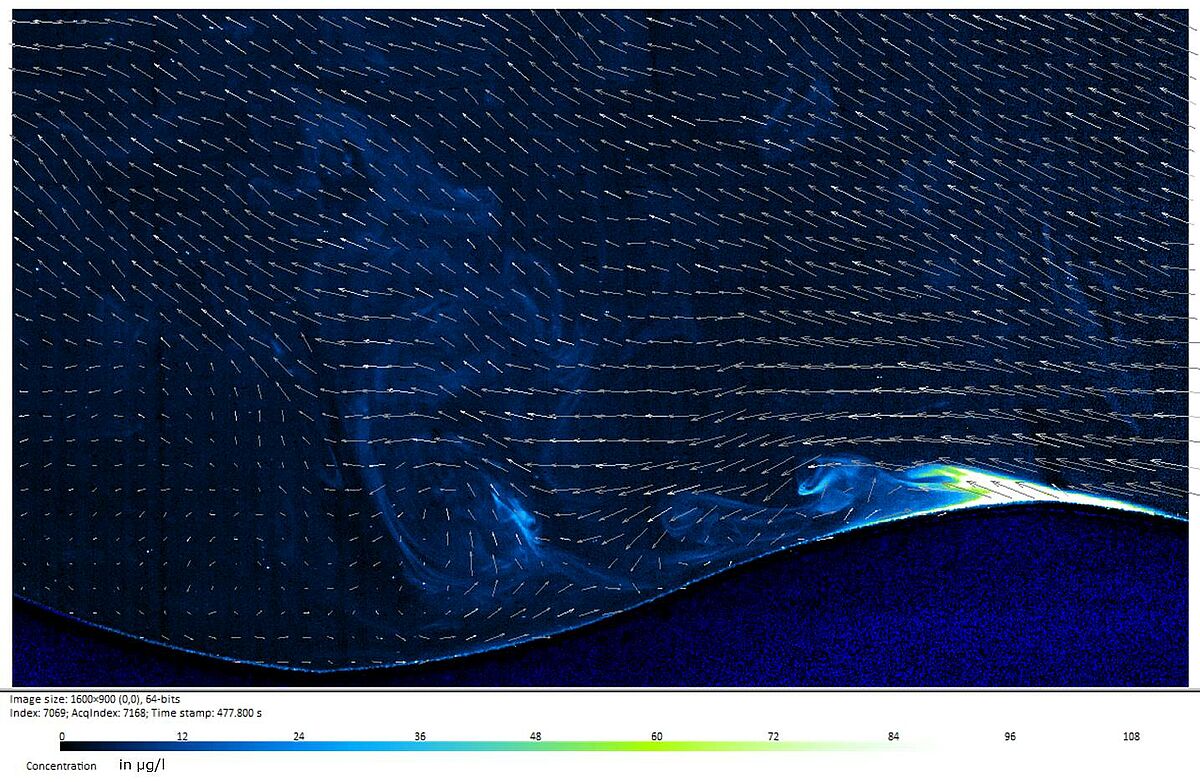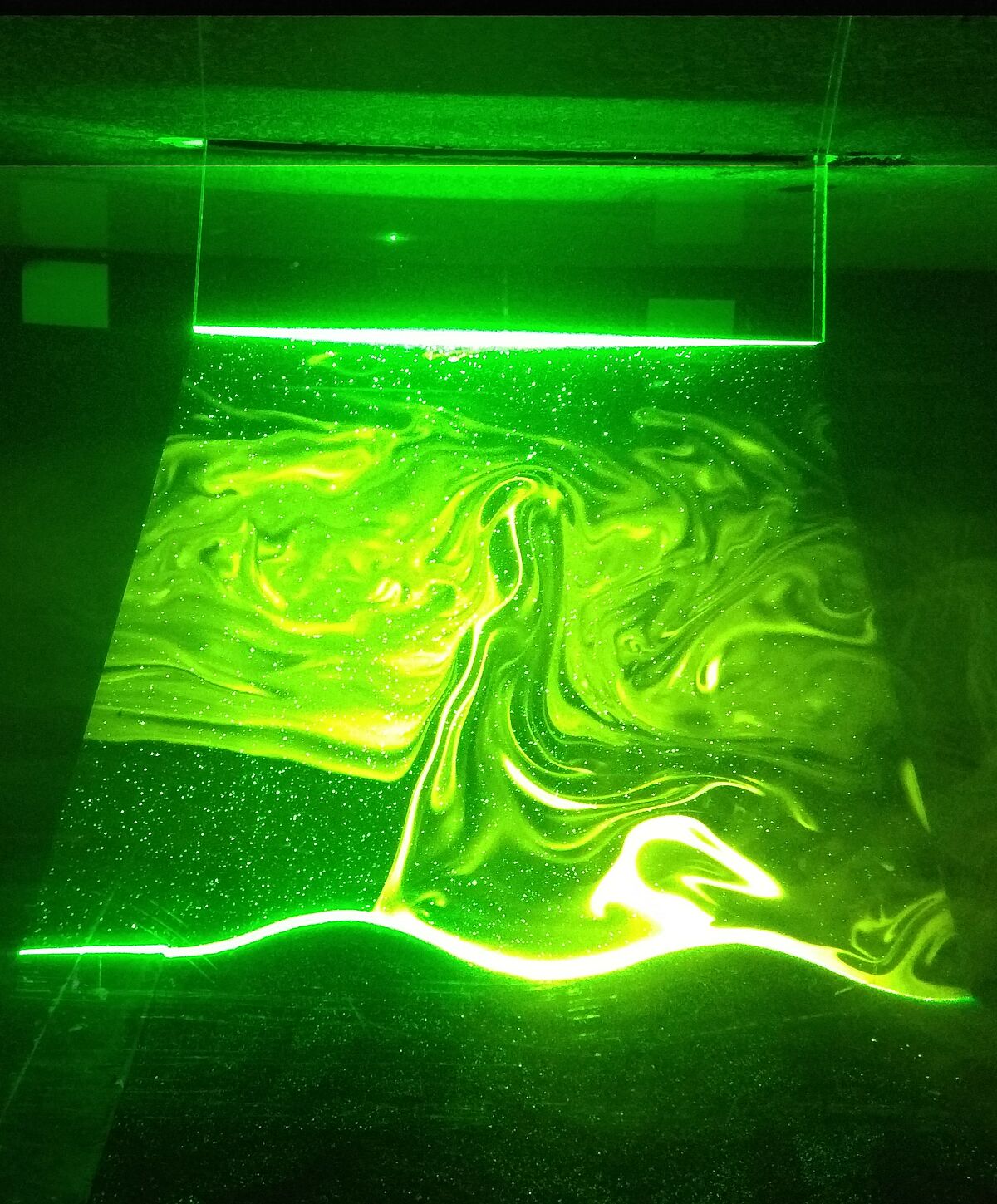Contact
Dr. rer. nat. Martin Brede
Oskar-Kellner-Institut (OKI) / Raum 108
Justus-von-Liebig-Weg 2
18059 Rostock
Fon +49 (0) 381 498 - 9316
Fax +49 (0) 381 498 - 9312
martin.bredeuni-rostockde
Baltic TRANSCOAST
The German Baltic Sea coast as a terrestrial-marine interface for water and matter fluxes
Subproject H4: Waves and turbulence above permeable sea beds in coastal waters causing vertical matter transport
Motivation
The scalar transport of entrained substances, as e.g. oxygen, plays an important role concerning the functioning of the Baltic eco system. In the past, the convective scalar transport including inflow processes from the North Sea were intensively investigated. Now, there is a considerable need for research concerning the mixing processes caused by wave-turbulence-interaction and the bottom boundary layer with the infiltration of ground water through the permeable seabed. The boundary layer is periodically agitated by the surface waves. In the water column turbulent motion and a transport of scalar variables away from the boundary layer is observed. In this process, the variability of the sediment’s hydraulic conductivity and its surface structure governs the characteristic small-scale turbulence field in the shallow water, thus controlling matter distribution in near seabed water layers. As a result, the bottom topography causing small-scale matter distribution in shallow waters influences larger scale transport processes within the Baltic Sea.
Objectives
Boundary layers above permeable, sloped or structured surfaces are generated in lab experiments. The flow over the surfaces is quantitatively observed with the focus on the scalar transport from the bed through the boundary layer and further into the operating waves and higher water layers. The main objective is to deepen the understanding of the connection between transport/mixing and the wave motion as well as the seabed flow. The results allow it to generate fluid mechanical boundary conditions for the numerical modelling of the terrestrial-marine interface.
Work plan
- Implementation of a lab experiment for the investigation of waves and turbulence above permeable sea beds in coastal areas causing vertical matter and energy transport
- Calculation of fundamental turbulence parameters as a function of sea bed permeability
- Investigation of turbulence and mixing as a function of wave parameters and structured sea beds, such as sand ripples
Information about the research project
| Involved |
Leonie Kandler, Helena Klettke, Martin Brede, Stefan Forster |
|---|---|
| Duration | January 2016 - December 2024 |
| Financial support | DFG - Graduiertenkolleg GRK 2000/1 |
Link to research project
DFG-Graduiertenkolleg 2000 Baltic TRANSCOAST (external link)

